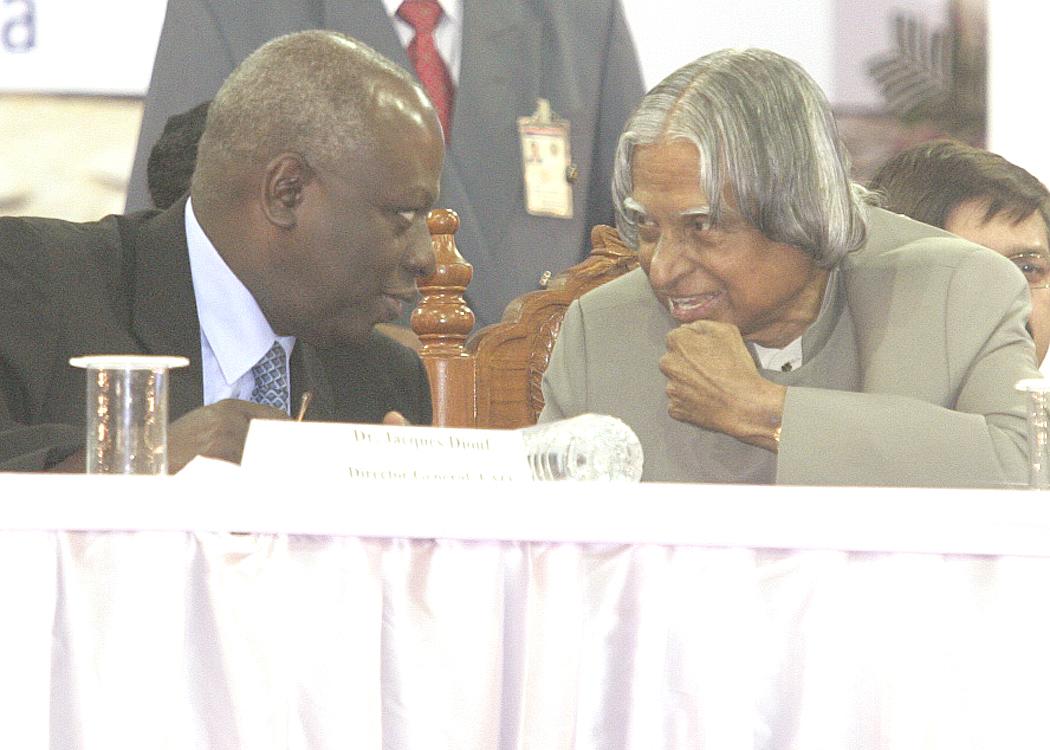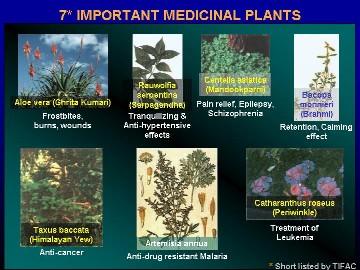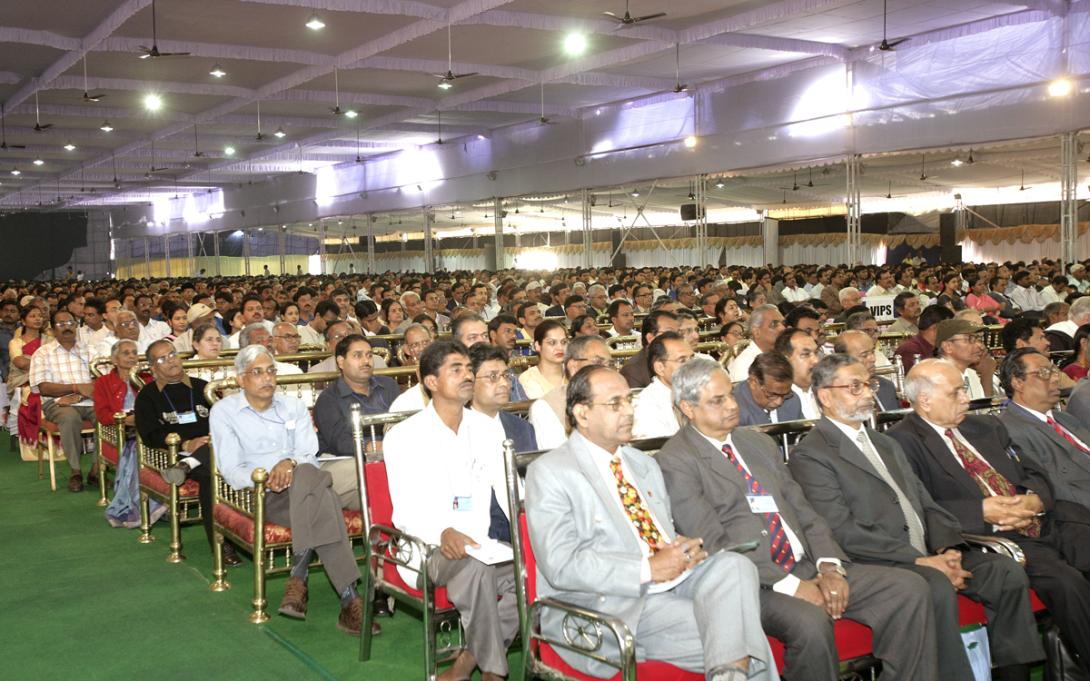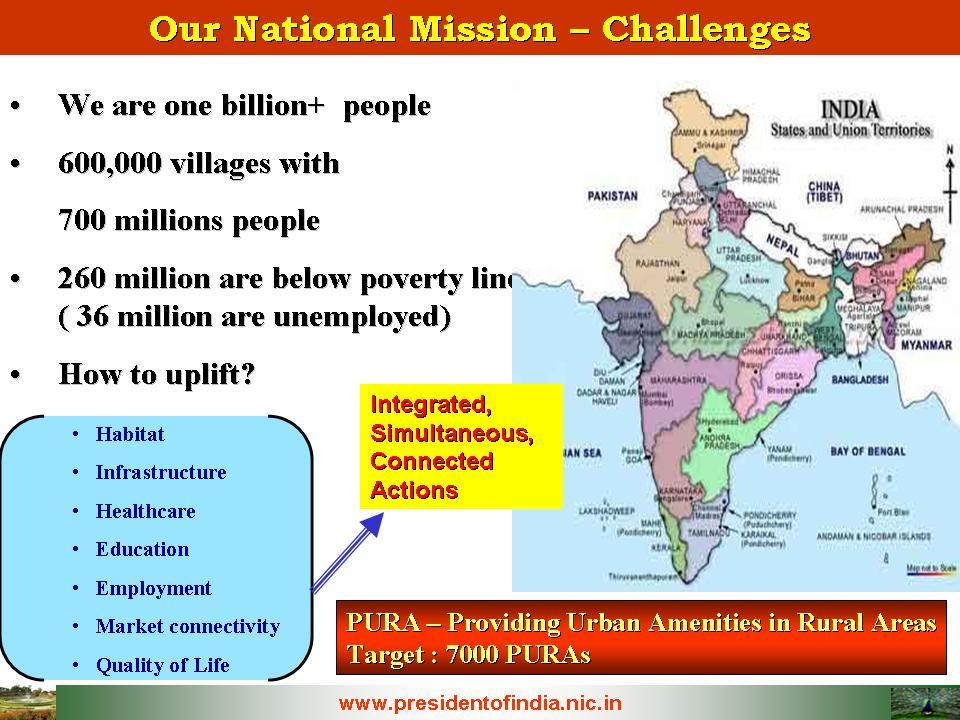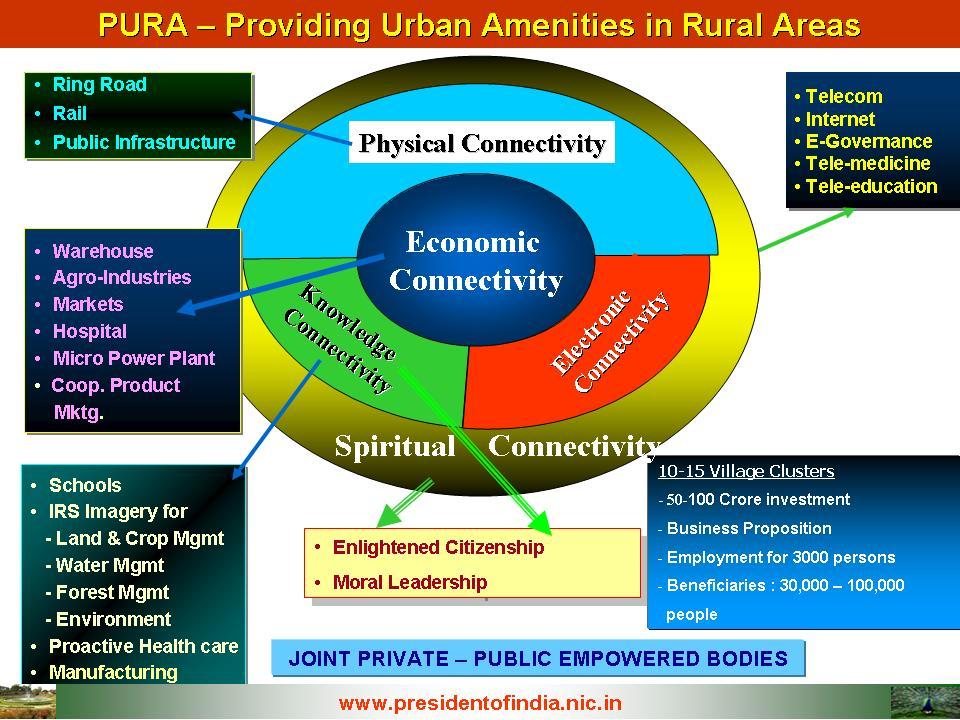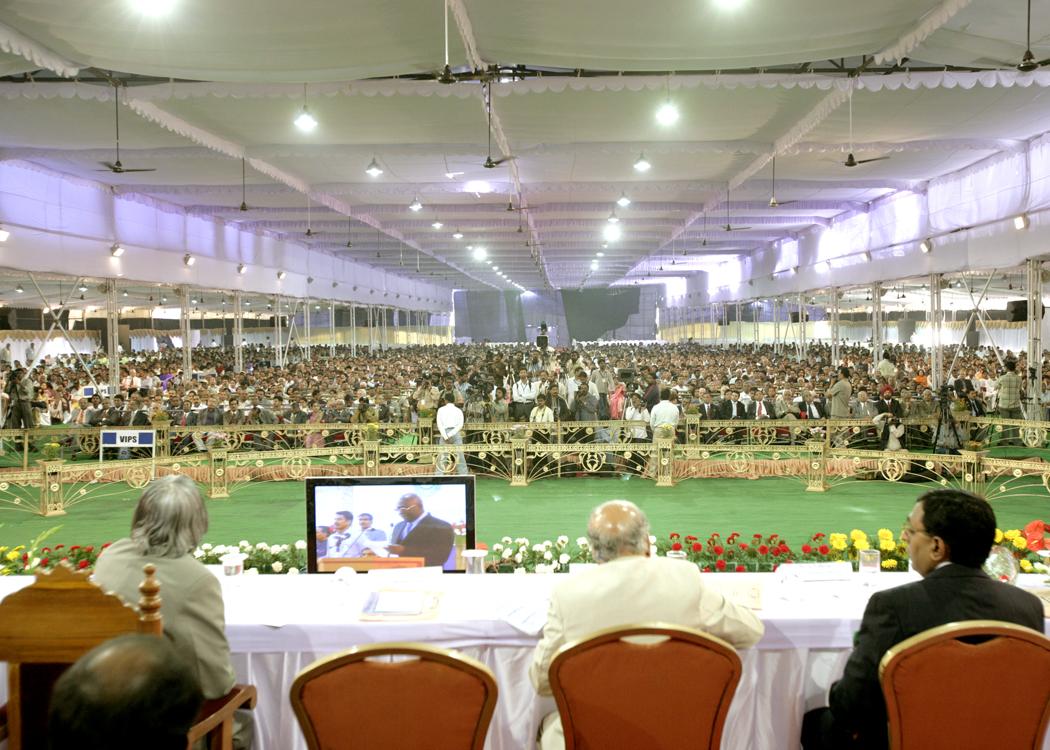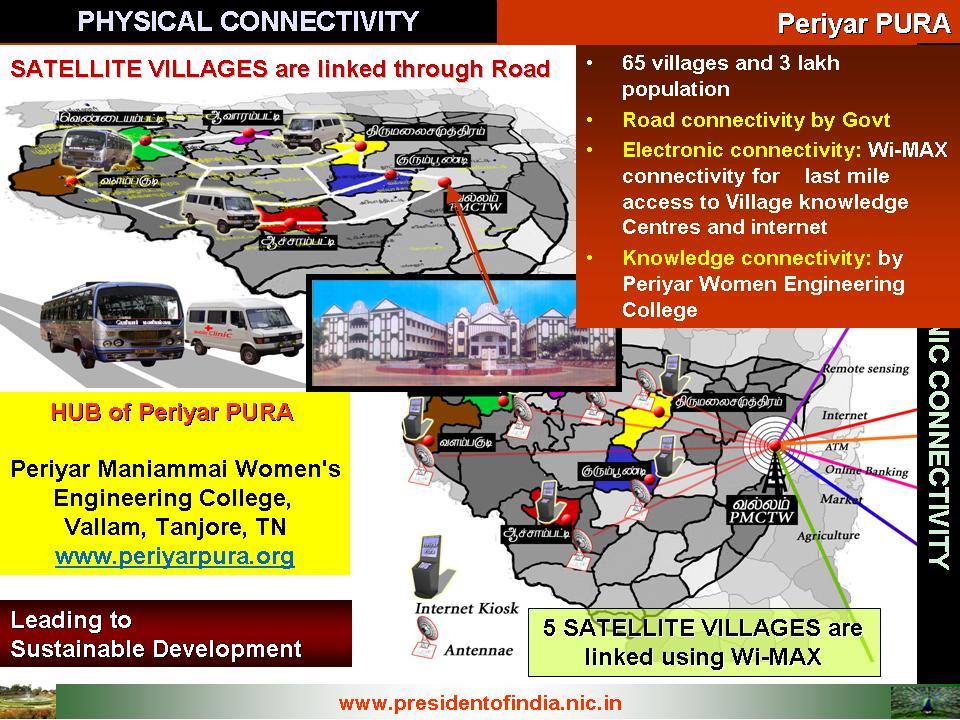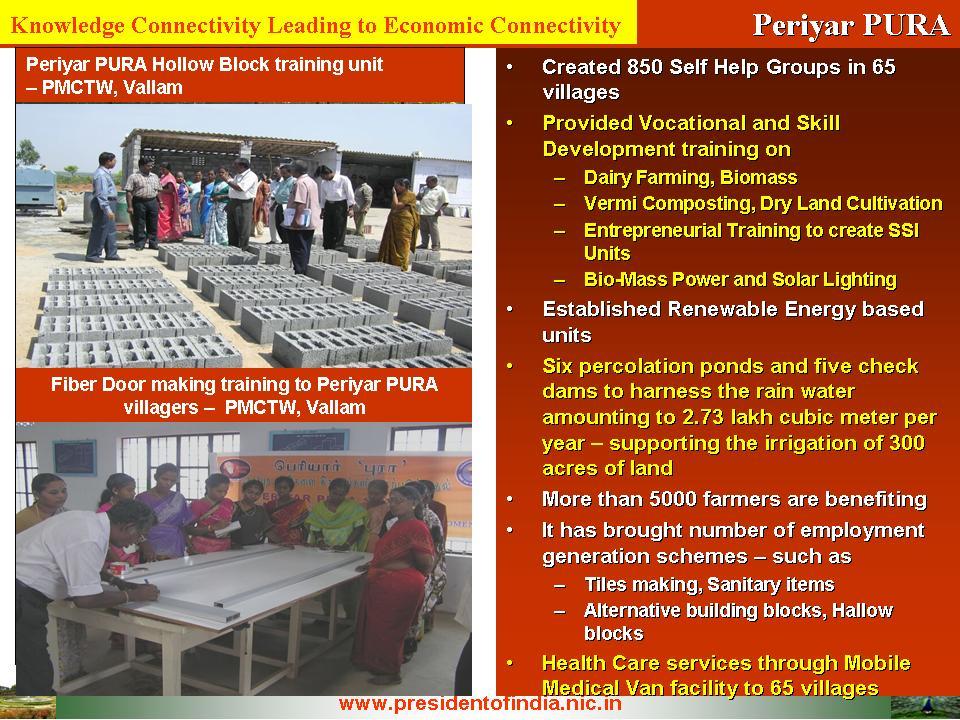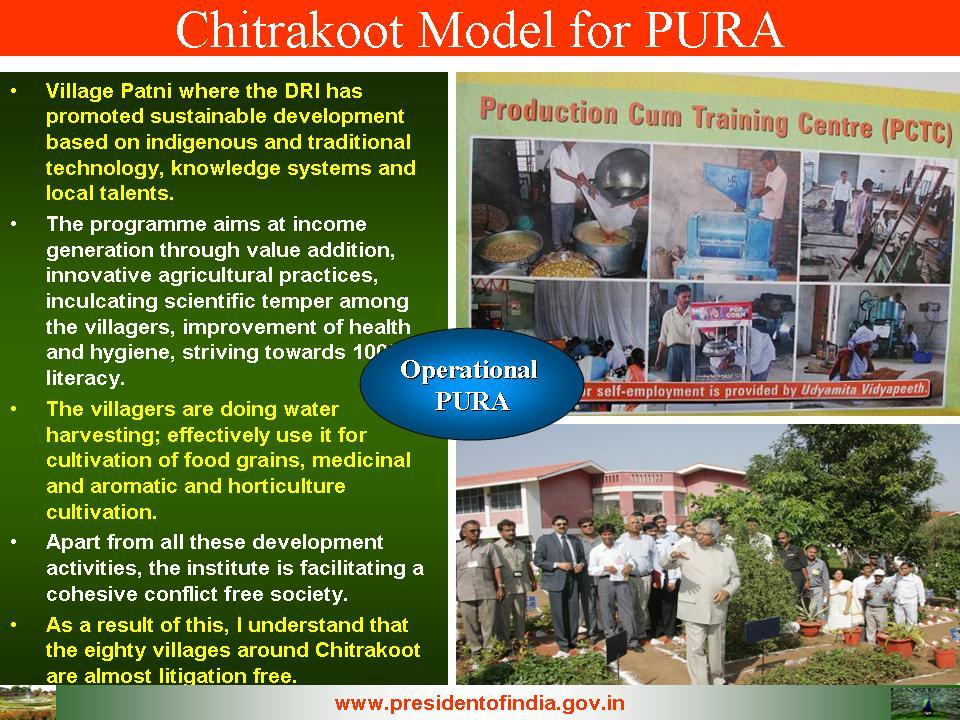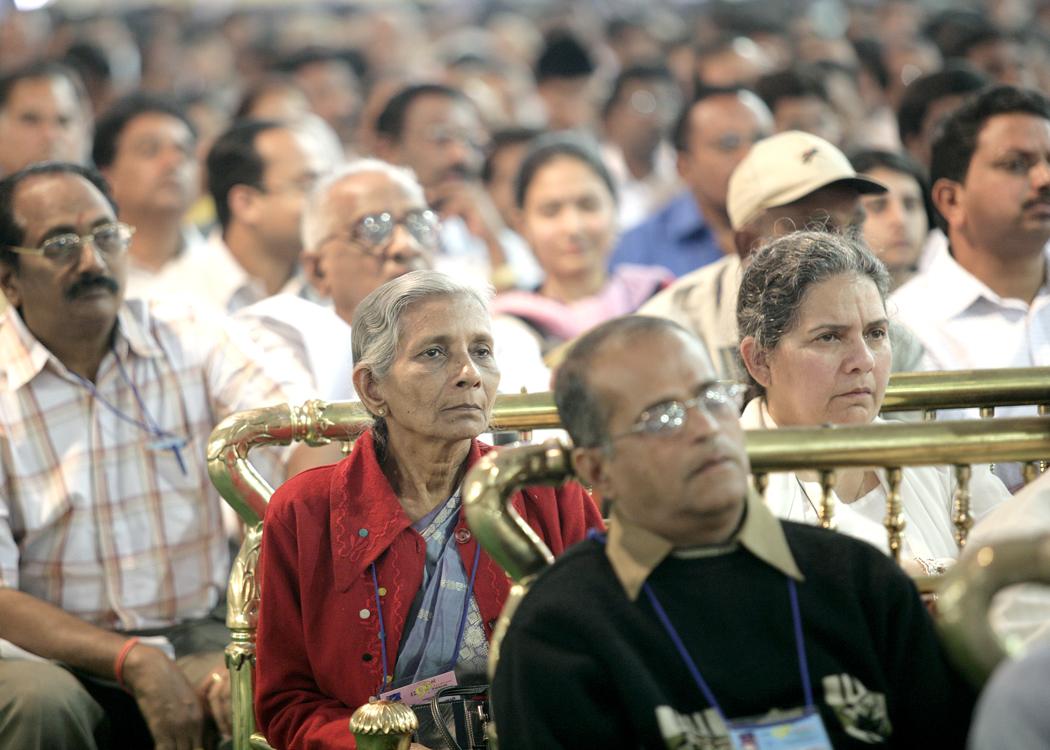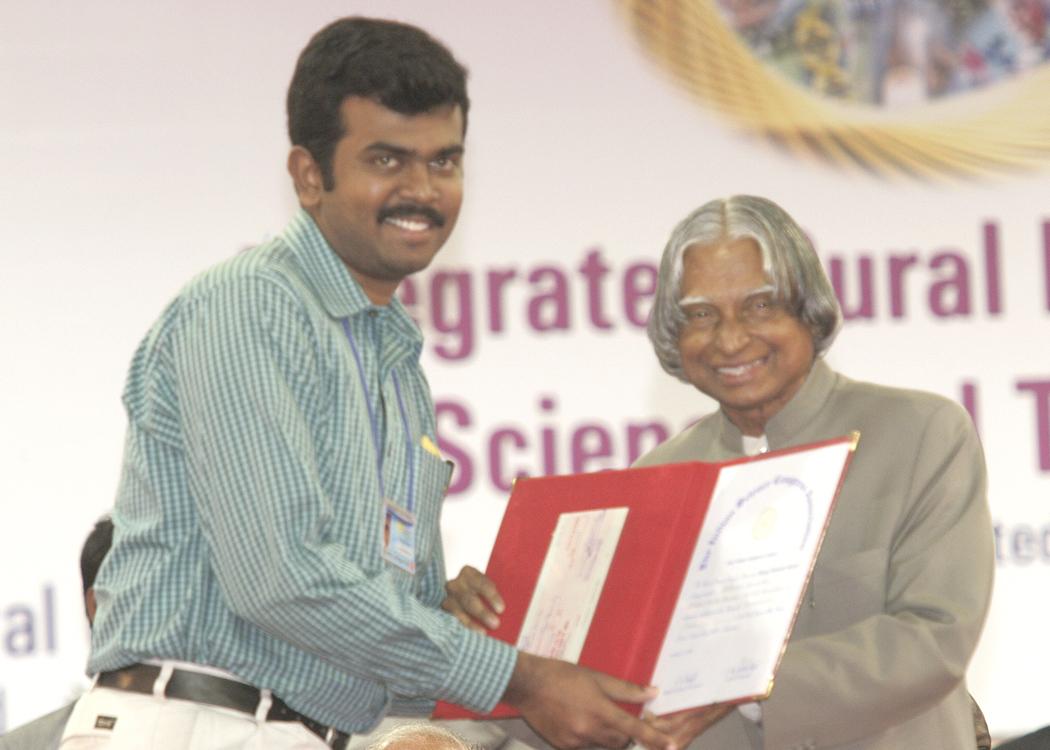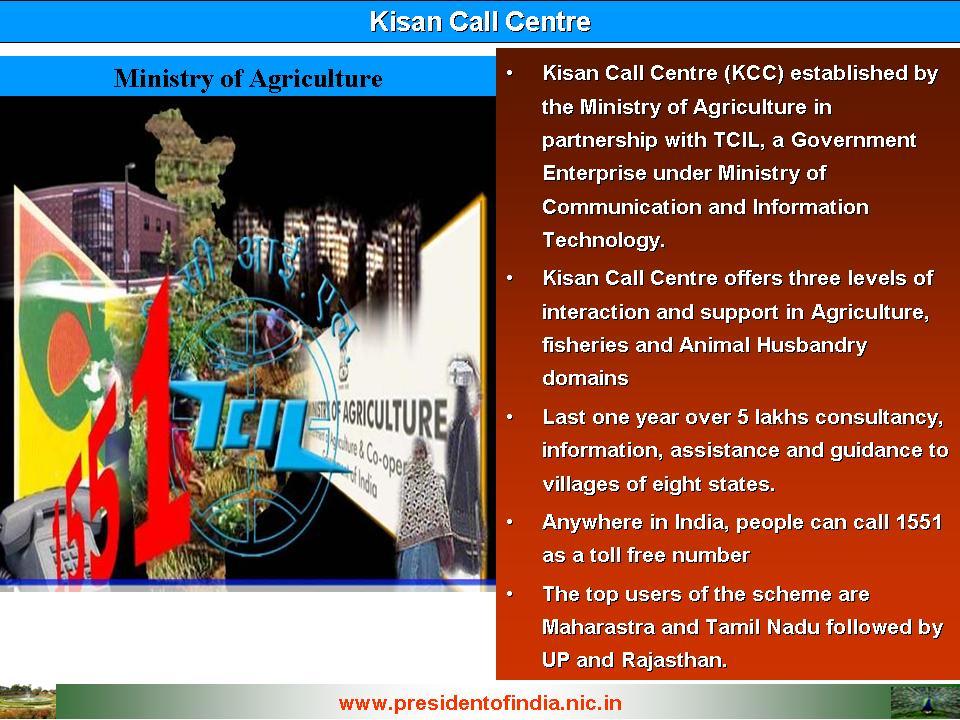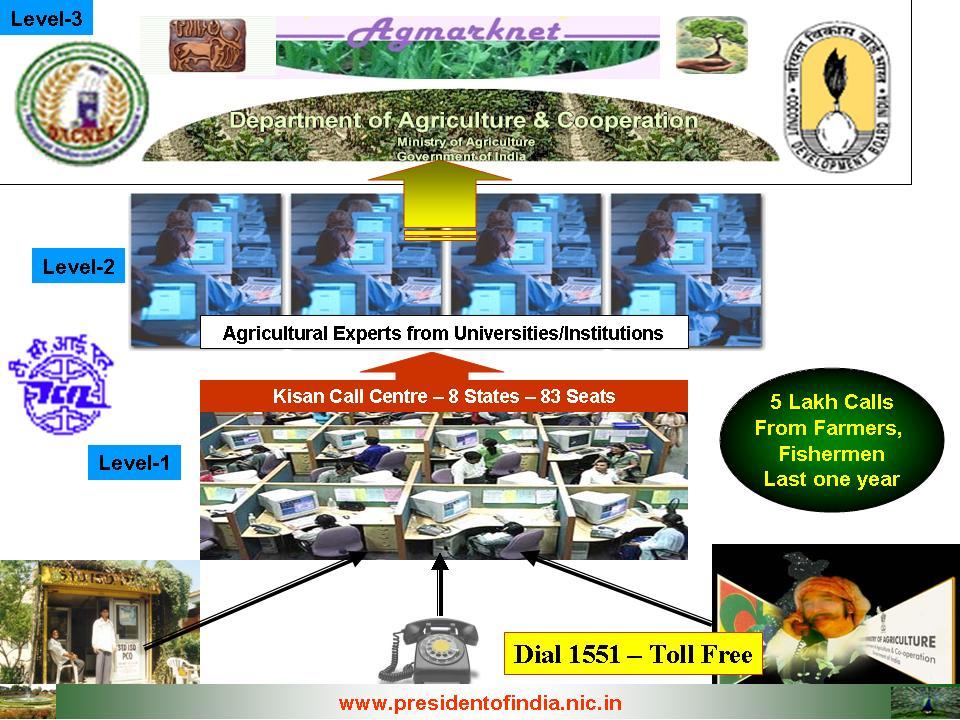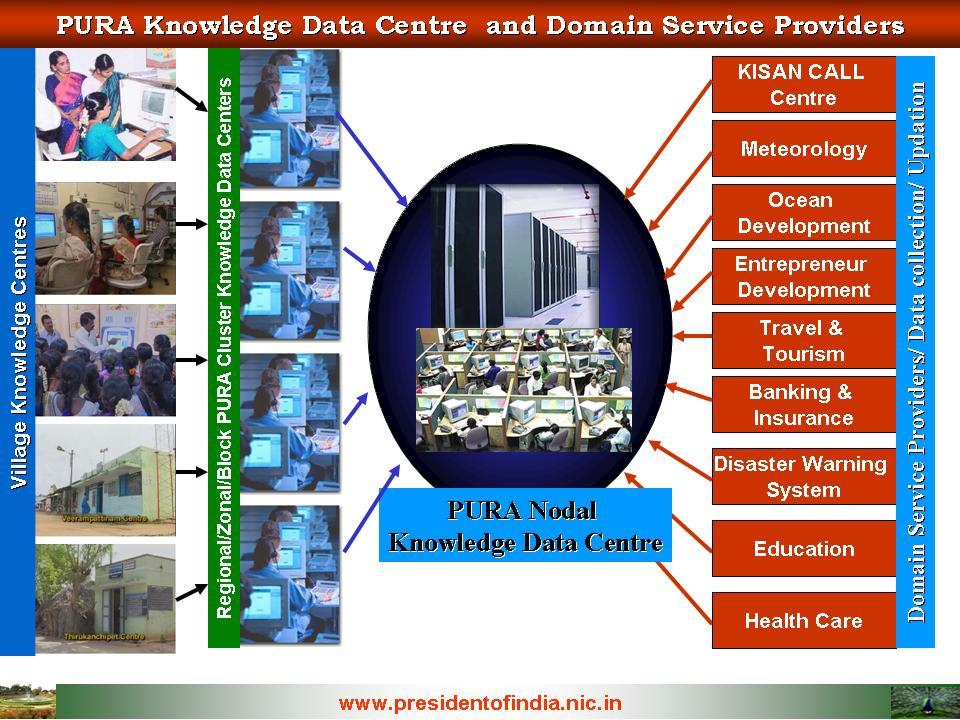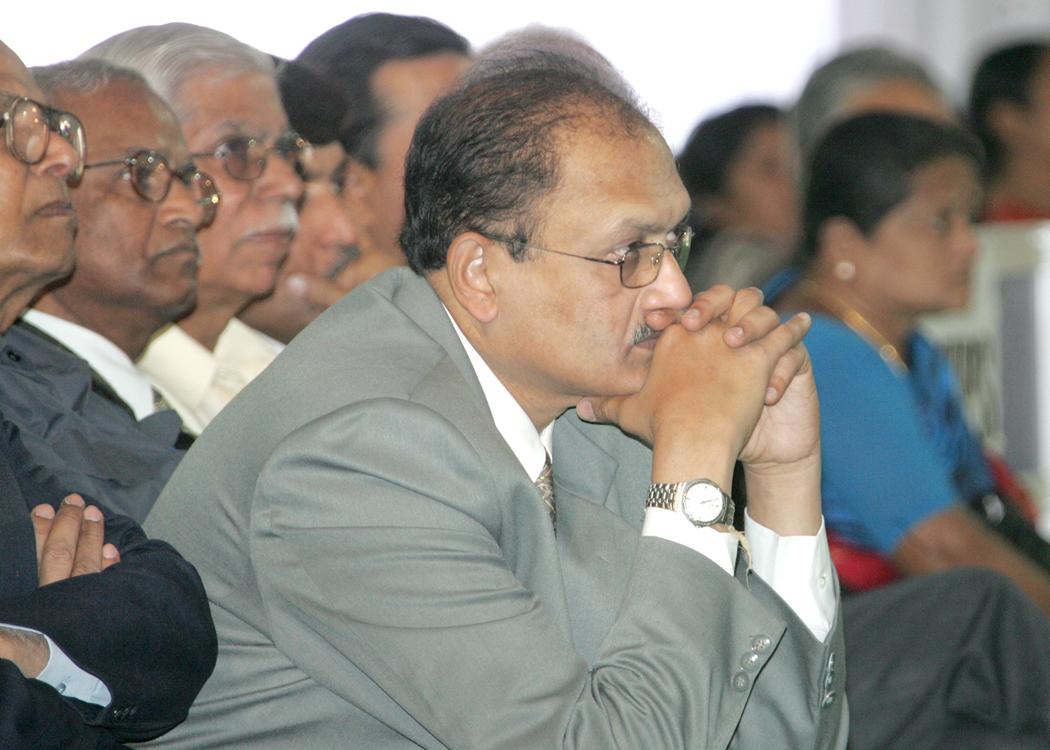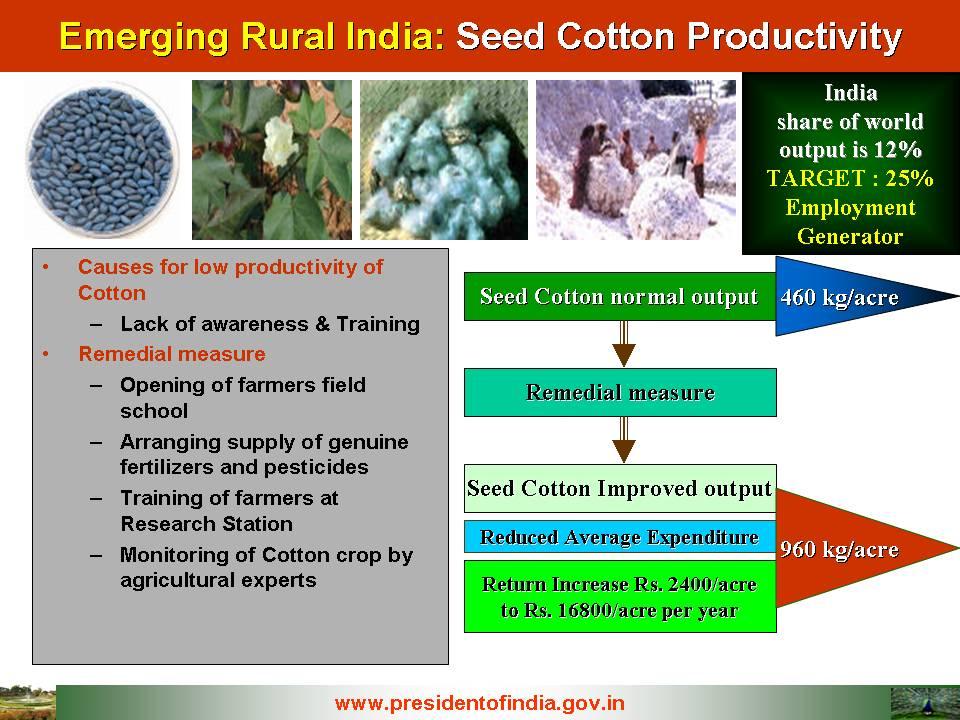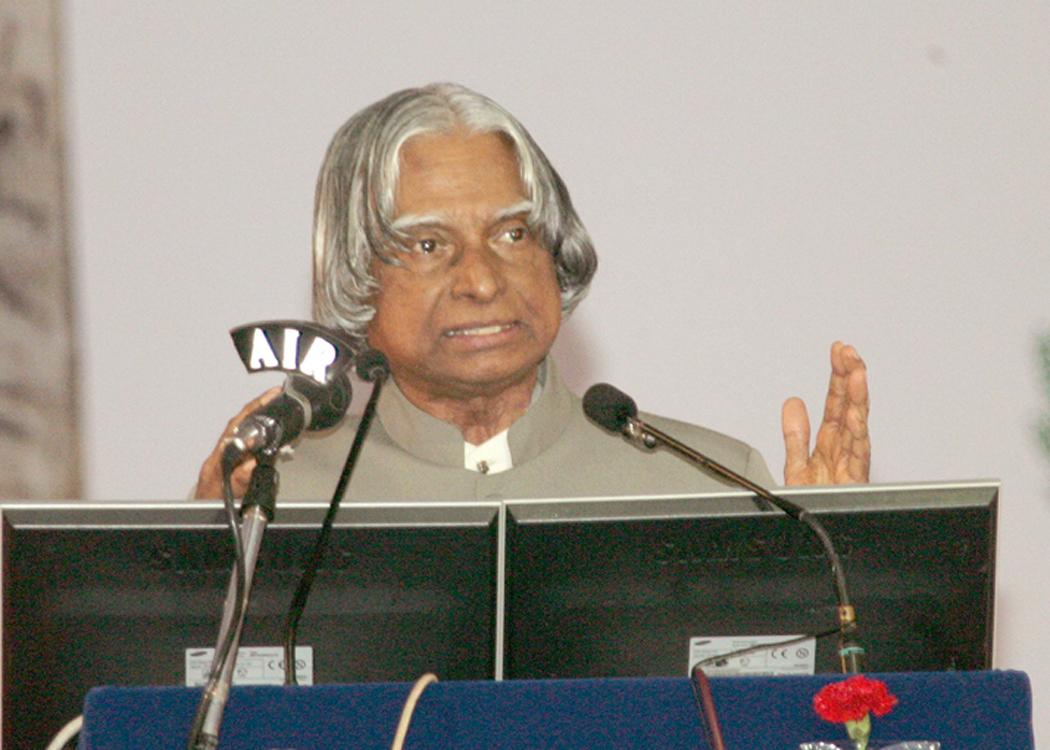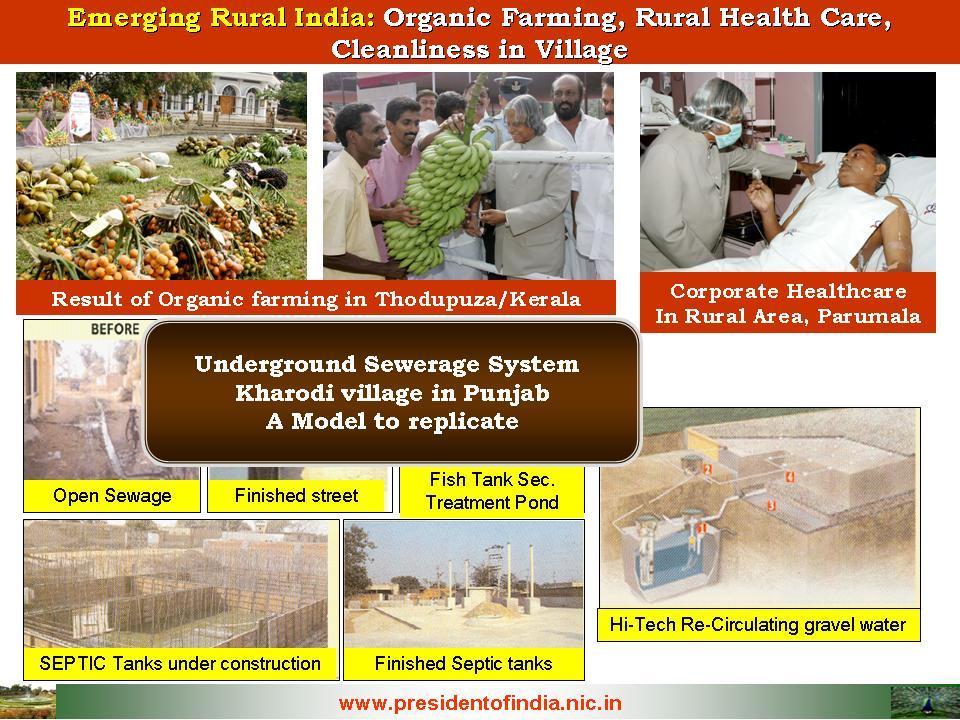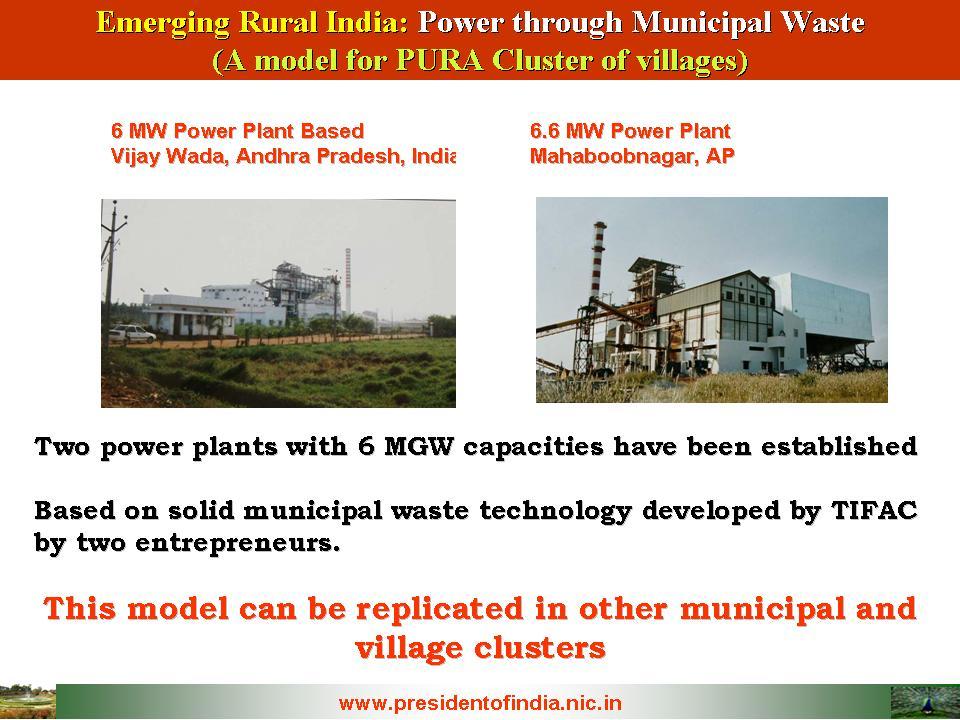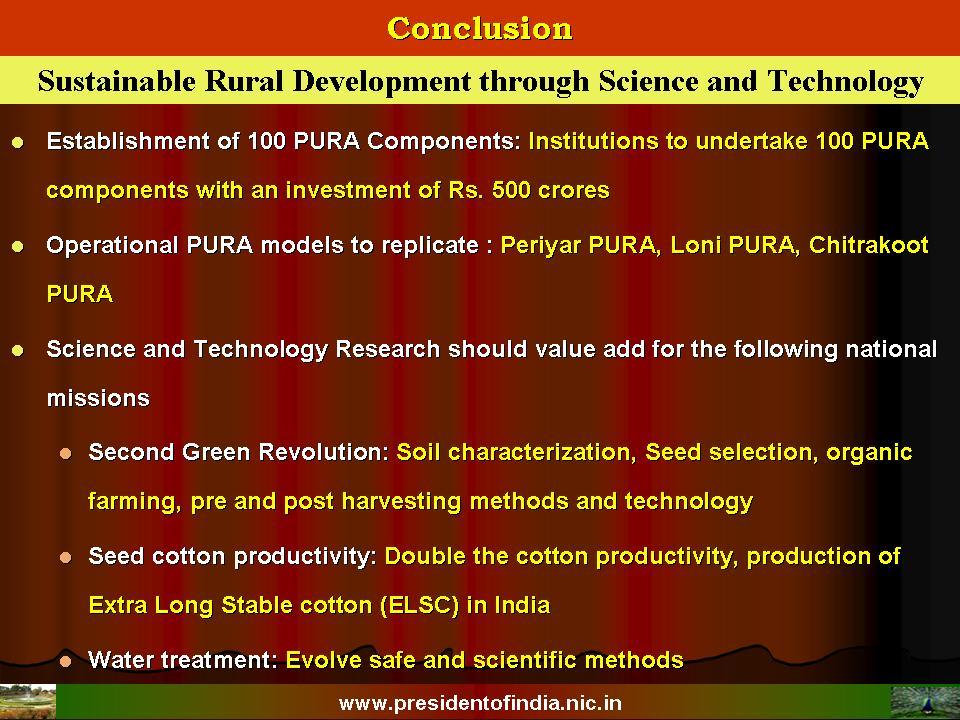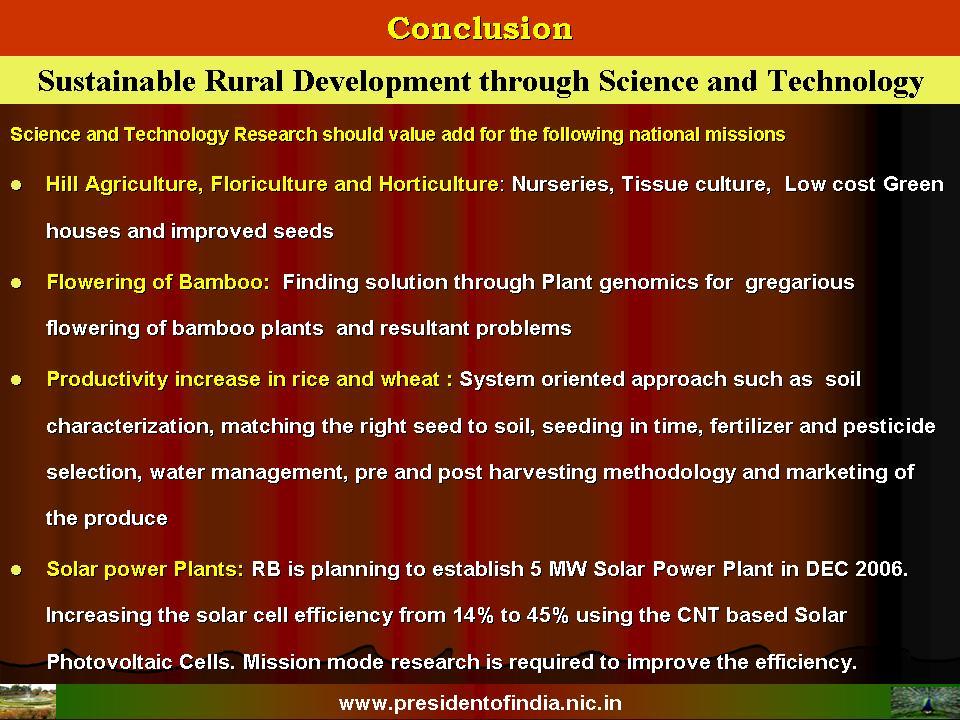Address At The 93rd Indian Science Congress, Hyderabad
Hyderabad : 05-01-2006
Dynamics of Rural Development
"if you do not work, no problem will occur, but if you .
do a mission or task definitely problems of varying
magnitudes will crop up. But problems should not
become the master of the individuals, individuals
should become master of the problem, defeat and
succeed"
Dear Friends, I am very happy that the Science Congress has focused on the theme ?Integrated Rural Development: Science and Technology?. My greetings to all the scientists who have come here from various parts of the country and abroad. It will be a beautiful opportunity for sharing the thoughts between experienced scientists including Nobel Laureates and young scientists, which will enable us to evolve a roadmap for rural development.
Mission of Science Congress: 2006
I consider every Indian Science Congress to be unique because a large number of aspiring young scientists from all parts of the country particularly from colleges located in the rural areas participate to meet the experienced scientists and deliberate on science and technology issues. This 93rd Indian Science Congress is very important since it is discussing the core issue of national development. Therefore, I visualize very important scientific, managerial event has to take place as a follow up of this congress. I am going to present to you what can be the mission linking academy, scientists, industry and our rural people of various regions.
Integrated mission: Need of the hour
Presently, the annual GDP growth rate of the nation is around 7% to 8%. There is a need to increase the growth rate of the GDP by additional 2% a year for transforming India into a developed nation and making the number of people below the poverty line to be near zero, we need to progressively implement the PURA programme in different parts of the country. As you are aware, the number of PURAs required to be brought out in the whole nation is around 7,000. Science and technology focus is required for making the integrated rural development programme sustainable and remunerative to the 700 million people of the country living in the rural areas.
In this context, connectivities are the central theme for both PURA as well as Bharat Nirman Programme and National Rural Employee Gurantee Scheme. The funds are assured, tasks are spread in various ministries with only one focus rural development. Institution like Indian Science Congress can become an integrating agency for the multiple schemes and give a scientific, technological and management leadership to the programme. Keeping this in mind I have selected the topic for discussion as "Dynamics of Rural Development".
Providing Urban Amenities in Rural Areas (PURA) Experiences
Now I would like to discuss about some of the experiences of Providing Urban Amenities in Rural Areas (PURA) programme at various rural environment which I have visited with my team.
Periyar PURA (Tamilnadu):
I have inagurated Periyar PURA complex pioneered by Periyar Maniammai College of Technology for Women, vallam, Tanjore a year back. I thought of sharing with you the developmental concept of a cluster of over 65 villages near Vallam, Thanjavur district of Tamilnadu that involves a population of 3 lakhs. This PURA complex has all the three Connectivities - physical, electronic and knowledge - leading to economic connectivity. The center of activity emanates from the women engineering college that provides the electronic and knowledge connectivity. Periyar PURA has health care centers, primary to post graduate level education and vocational training centers. This has resulted in large-scale employment generation and creation of number of entrepreneurs with the active support of 850 self-help groups. Two hundreds acres of waste land has been developed into a cultivable land with innovative water management schemes such as contour ponds and water sheds for storing and irrigating the fields. All the villagers are busy in cultivation, planting Jatropha, herbal and medicinal plants, power generation using bio-mass, food processing and above all running marketing centres. This model has emanated independent of any government initiative. The committed leadership has been provided by the Engineering institution. Recently, 5 of Periyar PURA villages are connected through Wi-MAX Wireless and having min 4 mbps connectivity with the Periyar PURA Nodel centre. It provides a sustainable economic development in that region. This gives me the confidence that PURA is a realizable proposition and this movement can be multiplied by thousands of entrepreneurs, educational administrators, small-scale industrialists and bankers with the support of the government agencies.
PURA: Loni Model (Maharashtra): Recently, I visited a place called Loni in Maharashtra where a participative model of integrated rural development has come up among 44 villages with the population of 80 thousand. The Loni PURA model has been pioneered by Pravara Medical trust. It is improving the productivity of the rural people through improved quality of life with healthcare, education and employment.
The concept is people centric development for social transformation. The thrust area of development has been on comprehensive Medicare particularly for women and children, need based health education and e-connectivity to the farmers. The complex has created 27 educational and vocational institutions consisting of schools, colleges, polytechnic and ITI including medical and engineering colleges. They have created sugar factory, biogas plants, chemical plants and power projects. They have large number of self-help groups for providing low interest loan for the weaker sections in the society. Due to the co-operative effort of the people, literacy in these villages has gone up from 63% to 83%, birth rate has come down, infant mortality rate has decreased to 35 per 1000 from 70 per 1000 and the standard of living of the people has gone up by over 20% compared to other villages in the neighbouring areas.
Chitrakoot PURA (Madhya Pradesh) : Recently I visited Chitrakoot in Madhya Pradesh, where I met Shri. Nana Deshmukhji (Age 90) and his team members belonging to Deendayal Research Institute (DRI). DRI is a unique institution developing and implementing a village development model, which is most suited for India.
DRI understands that people's power is more potent, stable and enduring than political power. By becoming one with the oppressed and depressed, one gains the acumen of administration and governance. Social advancement and prosperity are possible only by injecting the spirit of self-reliance and excellence in the younger generation. Using this principle, DRI has plans to develop one hundred clusters of villages having approximately five villages each around Chitrakoot. They have already developed 80 villages in 16 clusters consisting of about 50,000 people.
I witnessed one of the villages called Patni where the institute has promoted sustainable development based on indigenous and traditional technology, knowledge systems and local talents. The research work by the institute through field studies facilitates the development of replicable and tangible model for achieving self-reliance in villages. The programme aims at income generation through value addition, innovative agricultural practices, inculcating scientific temper among the villagers, improvement of health and hygiene, striving towards 100% literacy. As a part of integrated rural development, the villagers are doing water harvesting; effectively use it for cultivation of food grains, medicinal and aromatic and horticulture cultivation. Apart from all these development activities, the institute is facilitating a cohesive conflict free society. As a result of this, I understand that the eighty villages around Chitrakoot are almost litigation free. The villagers have unanimously decided that no dispute will find its way to court. The differences will be sorted out amicably in the village itself. The reason given by Nana Deshmukhji is that if the people fight among each other they have no time for development. They can neither develop themselves nor the community. This message has been understood by the society and they have decided not to embark on any fighting. All these have been accomplished through DRIs ?samaj-shil-pi dampati? (a graduate married couple) a new concept of counseling and intervention promoted by DRI. It was a great joy for me to take lunch with Patni village citizens. A new road connecting multiple villages in the Chitrakoot area is taking shape. In the same Chitrakoot environment there is another social organisation called Shri Sadguru Seva Sangh trust is carrying out number of social activities including the running of quality eye care center. In a rural environment, I find a revolution is taking place due to the committed leadership to remove the human pain.
Technology Driven PURAs
In all the three operational PURA?s what I have observed is that technology and application of scientific methods of working play a very important role. For example, power through bio-gas and solar energy is used for house hold lighting and also for the farms; Vermicomposting; check dams and water purification plants; Jatropha plantation to extraction and esterification; medicinal and aromatic plants cultivation, extraction and manufacturing healthcare products through self-help groups; low cost housing using alternative building blocks; Dairy farming; healthcare and education services; connectivity using wireless and Wi-MAX technologies and enabling the sustainable development and business processing taking places among the village clusters. In all these three PURAs, employment generation was the focus using technology experiences from the colleges and educational institutions and through assessment of markets which can absorb the products and services. With the emergence of PURA Clusters in different parts of the country, what is now required is the establish the linkage to PURA clusters by setting up of Domain service providers through PURA Nodal Knowledge data centres.
PURA Nodal Knowledge Data Centre
I have studied a system which is working and used by the farmers and fishermen in different parts of the country. This is called the Kisan Call Centre (KCC) established by the Ministry of Agriculture in partnership with TCIL (Telecommunication Consultant India Ltd) a Government Enterprise under Ministry of Communication and Information Technology.
Kisan Call Centre offers three levels of interaction and support in Agriculture, fisheries and Animal Husbandry domains through the nationally nominated experts and Corresponding directorates at the Central level. In the last one year of its operation the call centre have provided consultancy, information, assistance and guidance to over 6 lakhs callers from the villages of eight states. Anywhere in India, people can call 1551 as a toll free number to get the services. The top users of the scheme are Maharastra and Tamil Nadu followed by UP and Rajasthan. As we have seen in the Agriculture and fisheries oriented Kisan Call Centre setup, similar Domain Service Provider Call centres are required in the domains of Commerce and Industry, Entrepreneurial skill Development and Employment generation, Travel and Tourism, Banking and Insurance, Meteorological forecasting, Disaster Warning systems, Human Resource Development, Education and Health care and other necessary domains.
These call centers will act as a service provider to the PURA Nodal Knowledge Data Centres located in the PURA Complexes, which in turn will provide the area specific and customized knowledge to the Village Knowledge Centres in the villages in a holistic manner. In this connection, I would recall the meeting with 140 Fellows of National Virutal Academy, selected from various states by MSSRF. They will act as societal transformers in that villages.
Mission for Science Congress: Establishment of 100 PURA Clusters
Now I would like to recall to you, the three PURAs : Periyar PURA, Loni PURA, Chitrakoot PURA all the three are driven by a technology/academy institutions. Since the Ministers and Secretaries both from State and Central Government are present here, decision can be taken to allot Rs. 500 crore to develop 100 PURA Clusters and its components (comprising of 20 to 30 villages in the vicinity of the institution/college) by the 100 selected educational institutions or colleges spread across the country. Rs. 5 crore each will be utilized for developing infrastructure in rural complexes such electronic and knowledge connectivity to 100 clusters leading to setting up of village knowledge centres; agri-clinics; tele-education and tele-medicine centres; and other employment oriented schemes such as bio-gas plants; water treatment plants (brackish to potable water); mobile clinic with tele-medicine facility; initiating Jatropha farming to extraction plants; bio-fuel esterification plants; cold storage; consumer product development; vocational training centres and setting up of business centres by the entrepernuers for national and international marketing of the products from these rural enterpreises. But actions should not be taken by the colleges unilaterally, they should present their plans and alternatives to the local people who are beneficiaries and modify the plans to meet their needs based on thier core competence.
These programmes initiated by 100 educational institutions colleges with public-private partnership will provide the experience to other institutions for taking up big programmes in future in an industrial scale. This venture will build the capacities of the villagers and encourage the Indian enterprenuers to become an active partner in this development process. These activities should not be treated as mere experiments and scientific knowledge, it is the application of science and technology to societal transformation. The winners are the academic institutions and the rural people belonging to the PURA Clusters. At the end, there should be a clear assessment whether the users (villagers) have benefitted by the villagers themselves. This can be assesed by a joint team of the village members and the scientists/technologists. This will lead to the birth of the Civic Scientists. This is the performance challenge which I would like to pose to the experienced scientific community and to the Government officials. Tonight, you can meet and take a decision. I have discussed this proposal with the Minister of Rural Development, Dr. Raghuvansh Prasad Singhji. If any assistance for obtaining approvals is needed, I can assist.
Emerging Rural India
Friends, as you all are aware, I have visited all the states in our country and now I am focusing visits to particularly rural areas. Recently, I have visited rural areas in Punjab, Madhya Pradesh, Kerala, Rajasthan, Orissa and Bihar. Some experiences I would like to share with you based on what I have seen and discussed in these rural areas.
Cotton productivity: I visited a village called Gheri Buttar near Bhatinda in Punjab, where I met the farmers who have successfully increased the production of seed cotton from four hundred and sixty kilo gram per acre to eight hundred and sixty kilogram per acre in the year 2005. This has been achieved through a productive partnership between farmers, agricultural scientists, textile industry supervisors and the Government by following a scientific approach to farming, adopting pre-harvest and post-harvest techniques with an assured market for seed cotton. I have suggested the farmers in that village to mount a programme of second green revolution in Cotton meaning that instead of selling the cotton produce directly in the market they should convert certain quantity of cotton into yarn, cloth and apparel in the village complex itself and market it in the national and international markets. This is the only way that the income of the farmers can substantially go up.
I am very happy to inform all of you that the farmers of Gheri Buttar took the following oath with me:
"We the people of village Gheri Buttar, are proud that we have increased the productivity of seed cotton. This has resulted from the team work of farmers like us, industry of this region and the members of the university. We will spread the success of our village to many more villages and across the nation."
This is the type of user satisfaction that is crucial for application of science. The message for higher cotton productivity achieved in Gheri Buttar village in Punjab should be spread in all the parts of country.
Organic farming: I visited Thodupuzha village, Kerala and seen the success of farmers in organic farming and pesticide free farming. Farmers showed me with lot of happiness the results of organic farming such as green plantain fruits, bigger variety of Ginger roots, large sized root vegetables and various type of fruits particularly pineapple. What is needed in Thodupuzha is food processing, vegetable processing and fruit processing in a big way. This value addition will transform the village into an empowered village. The scientist should study the experiences of Thodupuzha and spread organic farming in the country.
Healthcare: In healthcare, I was impressed by the special school being run for special children at Thirupunithura and the new 350 bed Ayurvedic hospital. The important point we discussed was, Ayurveda hospital should aim at bringing out a document giving the diseases uniquely cured by Ayurveda. The college in partnership with the hospital should embark on the systematic development of molecule to drug as is being done in the Allopathic system. The state of the art hospital at Parumala under the leadership of Dr. Cherian is carrying out valuable research in tissue culture for heart valves and is also performing heart operations. It is a hi-tech hospital in a rural setting. It is indeed noteworthy. At Vallikavu, I handed over 500 ready built houses to the tsunami affected people. I saw there compassion with divine blessings flowing all around with infrastructure development as the focus. In essence, the entire visit made me feel that a dynamic situation is flowing all around Kerala touching many walks of life. I was indeed very happy.
Underground Sewerage System in Punjab village: I would like to refer to another good model which, I came across during my visit to Kharodi village which is very near to Shaheed Bhagat Singh?s village in Punjab. A NRI, Shri H.G.S. Gill from Canada with the help of State Government, has laid the underground sewerage system with stabilization tank and activated sludge system. With the availability of this underground sewerage system the whole village has been able to construct household toilets and toilets in schools, hospitals and other public places.
Electricity Generation from Municipal Waste: A serious problem has arisen both in rural and urban areas due to the accumulation of municipal solid waste. Efficient and environmentally clean disposal of garbage has always been a major technological challenge. While being a threat to the environment, mounting garbage is also a rich source of energy. The potential for converting this waste into useable energy, which will eliminate a major source of pollution, was realized by one of our innovative organizations- Technology Information Forecasting and Assessment Council of DST which helped in developing a completely indigenous solution for the processing of waste into a source of fuel. This fuel could, in turn, be used for generation of electricity through mini plants. Two entrepreneurs in Andhra Pradesh adopted the technology with refinement and established two independent plants in Hyderabad and Vijayawada generating over 6 megawatts of electricity each, which is being supplied to the State Grid. India needs thousands of mini power plants both in rural and urban areas using municipal waste.
Conclusion
While concluding, may I suggest the following societal missions to the scientific community, young and experienced, assembled here for promoting sustainable rural development missions through Science and Technology:
a. Establishment of 100 PURA clusters and its componets: Time bound establishment of 100 PURA cluster and its components by Educational institutions or colleges by January 2007 with an investment of Rs. 500 Crore and a strong focus on the local users for selection of projects, during the implementation and for assessment of final success. The results could be discussed in the 2007 Indian Science Congress in the form of successful papers.
b. Operational PURA models to replicate: Three operational PURA models namely Periyar PURA, Chitrakoot PURA, Loni PURA established and run by private initiative may be studied by the Ministry of Rural Development, Ministry of Communication and Information Technology and the Scientific community and spread the concept of these PURAs with industrial and academy participation in large scale.
Research Missions: I suggest the following seven research missions for promoting sustainable rural development through Science and Technology. The scientists can mount an intensive time bound research programmes in these areas:
1. Second Green Revolution: From now to 2020, we need to double the food production with the reduced availability of land for cultivation from 170 million hectares to 100 million. Also there will be shortage of water and human resource for farming. This increase will only be possible through the application of technology in agriculture farming, pre and post harvesting procedures and scientific storage.
2. Seed Cotton productivity has to be increased nationally to 900 Kg per acre from 450 Kg per acre using the existing successful model. In addition technology has to be provided to the farmers by the scientists to enable production of Extra Long Stable Cotton (ELSC) is currently being imported in India.
3. Water treatment: Many water borne diseases originate from the water consumed directly from the unprotected sources. Typical problems relate to existence of fluoride, arsenic, iron etc. in various parts of the country. Solution lies in establishment of cost effective large scale water treatment plants designed and built with reliability. In the case of arsenic after processing the water, the disposal of arsenic waste is becoming a health hazard. A safe scientific method has to be evolved.
4. Hill Agriculture, Floriculture and Horticulture: During my visit to earth quake affected areas in Uri, Thangdhar and Ursa of J&K. I found the need for hill agriculture, floriculture and horticulture. It is proposed to create Walnut, Apple, Almond, Olive nurseries in these areas and establish low cost green houses for production of vegetables during winter months and supply improved seeds of other crops grown by the farmers.
5. Flowering of Bamboo: As you are aware bamboo forest in India are spread over 10 million hectares. When I visited North East region of the country, I was told about a rare phenomenon?gregarious flowering of bamboo plants?is setting off alarm bells in the Northeast, leading to fear of a rodent menace. Flowering on such a scale, which takes place after every four decade has been noticed in Mizoram and Arunachal Pradesh. Unlike other plants, flowering in bamboo adversely affects the plant, producing large quantity of seeds. The seeds attract rodents, which turn to other crops, leading to large-scale destruction. The last such flowering was followed by a famine in Mizoram. I would suggest the plant scientists to find a solution through plant genomics for preventing such flowering and the resultant problems to the other crops and farmers. Time is crucial factor now. It may be in a few years time. Therefore, within a year solutions are required.
6. Productivity increase in rice and wheat: I would like to narrate how the Agricultural productivity has been enhanced in particular area of Bihar. An experiment has been carried out by TIFAC team in Bihar, in the RP Channel 5 and Majholi distributory and later extended to Paliganj and other 5 distributaries on the request of the farmers. The productivity of paddy has increased in these villages from 2 tons per hectare to 5.8 tons per hectare and in respect of wheat, it has increased from 0.9 ton per hectare to 2.6 tons per hectare. This has been achieved using farming methods involving soil characterization, matching the right seed to soil, seeding in time, fertilizer and pesticide selection, water management, pre and post harvesting methodology and marketing of the produce. Presently, paddy and wheat crops are spread in an area greater than 2500 hectares involving 3000 farmers. The experiment has been extended for promotion of medicinal and aromatic plants with processing for increasing the income of the farmers.
To remove the exploitation of farmers by middlemen, a local procurement centre has been set up by the government. This model can definitely be replicated in many parts of the country. However to get the future requirement of food grains with the constraints of land availability and water would need enhancing the productivity further. This is where the scientists have to work now to discover new breeds of wheat which can yield 5 tonnes per hectare and rice which can yield up to 10 tones per hectare.
Bihar has a potential to become number one state in Cereal production, since it is a Gangetic delta with quality soil, availability of abundant water and hardworking farmers. The planning commission, agriculture scientist and infrastructure development groups have to work together in making Bihar number one in Cereal production since India needs one more State to produce large amount of cereal to meet the increasing demand. Since the terrains are similar such methods can by spread to Eastern Uttar Pradesh also.
7. Solar power Plants: Commencement of establishing solar power plants is an essential requirement. At present, only kilo watt level solar power plants are available in the country. Rashtrapati Bhavan has planned to setup Asia?s largest solar power plant of 5 Megawatt capacity by the end of the year 2006. Solar energy is available everywhere. The scientists have to take up the challenge of increasing the solar cell efficiency from 15% to 45%. Research is essential using CNT plus Silicon photo voltaic cells which will make the establishment of Solar power plants competitive.
I have discussed some of the components of PURA, which are essential for realizing the integrated rural development complexes. The educational institutions can also consider giving development components of PURA, as projects to the undergraduate and post graduate students. I would request the educational institutions and scientists to undertake the value added implementation of these components in their rural clusters in collaboration with private industries, NGOs State Governments and the local people for whom it is proposed to be done.
My best wishes to all the participants of 93rd Indian Science Congress for success in the mission of providing science and technology solutions to the integrated and sustainable rural development of the country.
May God bless you.

